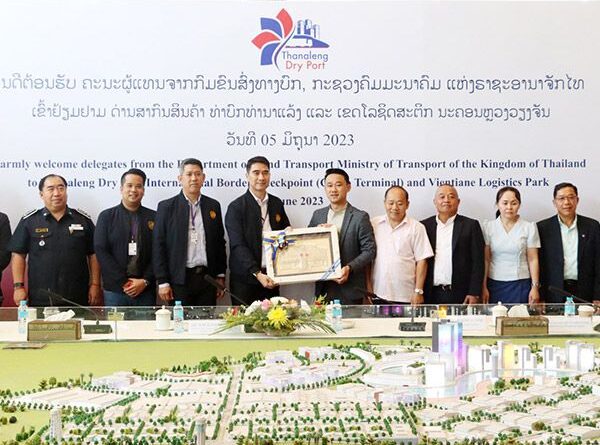Laos and Thailand Seek to Speed Up Cross-Border Freight Transport via Thanaleng Dry Port
Source: The Star
The developer of the Thanaleng Dry Port and Thai authorities on Monday (June 5) held talks at the port in Vientiane to seek common ground in an attempt to speed up the transport of cross-border freight.
Functioning as a border checkpoint for freight where the Laos-China and Laos-Thailand Railways converge, the dry port has become an important gateway through which Thailand is exporting and importing goods to and from Laos, China, and beyond through cost-effective service rail services.

We are Your Marketing Partners in Laos
Through the use of rail transport, Thai businesses have enjoyed faster and more direct shipment of goods, especially of fresh produce.
The shorter delivery time means that fresh vegetables and fruit such as the popular durian reach Chinese customers much more quickly. This has been made possible thanks to the opening of the dry port and the Laos-China Railway in December 2021.
“Shipping cargo from Thailand to China by rail now takes just four hours,” the dry port’s managing Director, Sakhone Philangam told the guests.
The visiting Thai authorities included representatives of the Department of Land Transport, Thai National Shippers’ Council, Office of Industrial Economics, Digital Economy Promotion Agency, Thailand Development Research Institute, universities, and private logistics and transport service providers.
The group was inspecting the Nong Khai-Vientiane-Boten-Mohan-Kunming rail route and considering ways in which freight transport could be speeded up.
Sakhone said some procedures needed to be addressed in order to speed up the movement of freight through the integrated dry port.
Thai entrepreneurs, he recommended, need to make early/prior inspection and declaration, including ensuring correct declaration of the numbers of containers and seals.
“Currently, 60 percent of products from Thailand [arriving at the dry port] has no seal,” he said.
Without a seal, a full inspection must be carried out, which slows the passage of freight.
Both sides, he added, should reach a consensus that clearance procedures should be done in Thailand in advance so that the information can be shared to ease the process and speed up the movement of freight.

